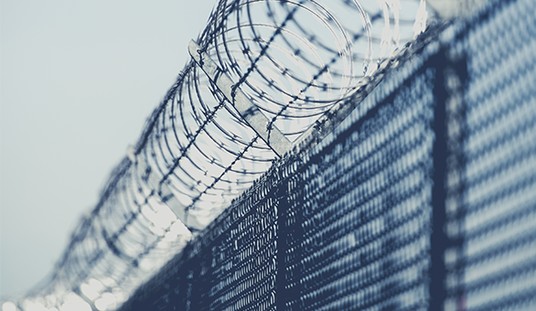Major cities like Los Angeles and New York, plus about half the states have already announced that schools will not be reopening this spring. But as pressure builds to reopen the economy, there are still some doubts about whether or not schools will be able to open up in the fall for the 2020-2021 school year:
President Trump has said repeatedly he wants to open the country for business as soon as possible, often mentioning May 1 as a goal. Yet epidemiologists are warning that the coronavirus, which has already killed more than 22,000 people in the United States, will be a threat to public health for many months. Fauci, who is the director of the National Institute of Allergy and Infectious Diseases and who has become the medical community’s leading spokesman on the pandemic, has suggested schools may be able to open in the fall if current efforts to “flatten the curve” are successful. He was nothing if not indefinite.
“You know, it is unpredictable, but you can get a feel for it if we start talking about the things where the curve goes down,” Fauci said at a White House briefing. “How we respond and what kind of a rebound we see or don’t see, I think is going to have a lot of influence probably more immediately on things like summer camps than it does in the fall.”
Fauci may be right, but there’s also a possibility that we could pass the current infection peaks in the next month or so and then find ourselves facing a new surge in infections once the economy starts to open up. Some schools and institutions are planning for the worst case so they don’t get caught flat-footed again like they did this spring. Today the College Board, which administers the SAT, announced that it had contingency plans in place on the chance that schools are not able to reopen in the fall.
“We know students and educators are worried about how the coronavirus may disrupt the college admissions process, and we want to do all we can to help alleviate that anxiety during this very demanding time,” College Board CEO David Coleman said during a press call Wednesday. “In the unfortunate and unlikely possibility that schools do not open this fall, the College Board will be ready to provide a digital SAT at home.”
In Indiana, schools are preparing for the same possibility:
A growing number of Indiana educators are beginning to prepare for remote instruction to go into the next academic year. Schools that were caught off guard and initially focused on triaging the immediate needs posed by building closures are now recognizing that they could be shut down indefinitely. As a result, districts are making massive investments in technology with the aim of ensuring all students have computers or tablets by the fall. And community leaders are raising funds to train teachers in a bid to improve the quality of the instruction that happens online.
Schools in Washington state hope to be open in the fall but are also thinking about how to be ready if they are not:
Although school is expected to open this fall, [schools chief Chris] Reykdal, standing next to Inslee during the news conference, urged educators to prepare for the possibility that schools could remain closed beyond this school year. “We know we have to be significantly better at this distance model in case we find ourselves in that reality.”
California’s Governor is talking about opening the schools next fall with some attempts made to allow for more social distancing. But not everyone is sure that will work:
That could mean having students split the school day into morning and afternoon shifts, he said, or staggering lunch, gym and recess to limit the size of gatherings.
Newsom said “we need to get our kids back to school; I need to get my kids back to school” but that the state would be “very, very vigilant” in how they do so, including deep cleanings…
Edgar Zazueta, with the Association of California School Administrators, said that while socially distanced schools would be hard to accommodate for any district, some lack the facility space to even give it a fair shot.
“On the bright side, folks are encouraged that we’re at least talking about having school in person in the fall. That hasn’t been a given,” Zazueta said. “We do appreciate that the governor is talking about this early but folks are going to be reluctant to go into places where there’s still some density. With just the nature of schools, no matter what we put in place, we’re talking about kids here. The notion of physically distancing is not going to go well.”
Government schools are a unique problem because until they are open, many parents can’t leave home to go to work. So until schools open for younger kids, the economy is really still on hold. On the other hand, students are legally required to show up to K-12 schools. So once they reopen, everyone is obligated to send their kids. The battle between those parents who are eager to get back to work and those who are worried about the risk of kids bringing home the virus (for instance, people who live with an elderly parent at home) is going to be intense.
Colleges are a different situation because students are adults and no one is required to go. The NY Times published a story today suggesting colleges are very worried that a lot of students may not return in the fall, either for reasons of practicality or finances:
For years, Claire McCarville dreamed of going to college in New York or Los Angeles, and was thrilled last month to get accepted to selective schools in both places. But earlier this month, she sent a $300 deposit to Arizona State University, a 15-minute drive from her home in Phoenix. “It made more sense,” she said, “in light of the virus.”…
Some institutions are projecting $100 million losses for the spring, and many are now bracing for an even bigger financial hit in the fall, when some are planning for the possibility of having to continue remote classes.
Administrators anticipate that students grappling with the financial and psychological impacts of the virus could choose to stay closer to home, go to less expensive schools, take a year off or not go to college at all. A higher education trade group has predicted a 15 percent drop in enrollment nationwide, amounting to a $23 billion revenue loss…
Small institutions like Hampshire College in Amherst, Mass., are more vulnerable to financial setbacks than big ones. Hampshire’s president, Ed Wingenbach, has put together a working group that is considering shorter units of study that would allow students to cycle in and out of remote learning if the virus comes and goes.
“If we’re looking at remote learning in the fall,” he said, “I think it’s more likely students will take a gap year or semester, and that will have a different impact on revenue.”
To sum all of this up, there’s a lot of hopeful optimism that schools will be reopening in the fall but beneath that there’s also some awareness that the situation could change and distance learning may need to continue for some part of the fall semester. All of that will be dependent on how the country gets through the first peaks of the virus and whether or not we’re facing a second wave this summer.








Join the conversation as a VIP Member